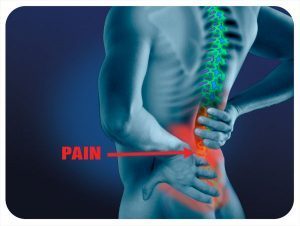- Home
- Editorial
- News
- Practice Guidelines
- Anesthesiology Guidelines
- Cancer Guidelines
- Cardiac Sciences Guidelines
- Critical Care Guidelines
- Dentistry Guidelines
- Dermatology Guidelines
- Diabetes and Endo Guidelines
- Diagnostics Guidelines
- ENT Guidelines
- Featured Practice Guidelines
- Gastroenterology Guidelines
- Geriatrics Guidelines
- Medicine Guidelines
- Nephrology Guidelines
- Neurosciences Guidelines
- Obs and Gynae Guidelines
- Ophthalmology Guidelines
- Orthopaedics Guidelines
- Paediatrics Guidelines
- Psychiatry Guidelines
- Pulmonology Guidelines
- Radiology Guidelines
- Surgery Guidelines
- Urology Guidelines
Low Back Pain Treatment Guidelines- Medications

Low back pain (LBP) is a common disorder involving the muscles, nerves, and bones of the back.Pain can vary from a dull constant ache to a sudden sharp feeling.Low back pain may be classified by duration as acute (pain lasting less than 6 weeks), sub-chronic (6 to 12 weeks), or chronic (more than 12 weeks).The condition may be further classified by the underlying cause as either mechanical, non-mechanical, or referred pain.The symptoms of low back pain usually improve within a few weeks from the time they start, with 40-90% of people completely better by six weeks.
In March, 2014, the State of Colorado, Department of Labor and Employment published the Low Back Pain Medical Treatment Guidelines. An important section of the guidelines deal with the Medications to be used for low back pain. Following are the major recommendations
Medications
Use in the treatment of low-back injuries is appropriate for controlling acute and chronic pain and inflammation. Use of medications will vary widely due to the spectrum of injuries, from simple strains to post-surgical healing. A thorough medication history, including use of alternative and over-the-counter medications, should be performed at the time of the initial visit and updated periodically. Treatment for pain control is initially accomplished with acetaminophen and/or NSAIDs. The patient should be educated regarding the interaction of prescription and over-the-counter medications as well as the contents of over-the-counter herbal products. The medication lists below do not provide complete information on side effects or drug interactions. Providers should seek information from other sources for details. The following are listed in alphabetical order. Refer to the original guideline document for additional information about each of the medications listed below, including optimal and maximum duration oftreatment for recommended medications.
- Acetaminophen
- Antibiotics for chronic pain secondary to disc herniation
- Intravenous steroids
- Glucosamine (not recommended for chronic lumbar spinal or non-joint pain)
- Muscles relaxants
- NSAIDs (chronic use of NSAIDs is generally not recommended due to increased risk of cardiovascular events and GI bleeding)
- Opioids
- Oral steroids (not generally recommended)
- Psychotropic/anti-anxiety/hypnotic agents
- Tramadol (not generally recommended for those with prior opioid addiction)
To read the full guidelines click on the following link:-
https://www.colorado.gov/pacific/sites/default/files/MTG_Ex1_LBP.pdf
Next Story
NO DATA FOUND

Disclaimer: This site is primarily intended for healthcare professionals. Any content/information on this website does not replace the advice of medical and/or health professionals and should not be construed as medical/diagnostic advice/endorsement or prescription. Use of this site is subject to our terms of use, privacy policy, advertisement policy. © 2020 Minerva Medical Treatment Pvt Ltd